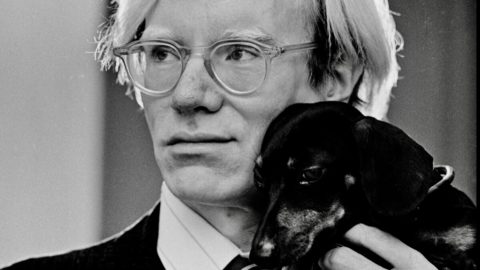In the early XNUMXs Andy Warhol, the pioneer of Pop Art, ahad already achieved notoriety for his representations of celebrities, including Marilyn Monroe, Jackie Kennedy and Elizabeth Taylor. His very first self-portrait, dated 1963-1964, represents the precise moment of the birth of the iconic character Andy Warhol. Created when the artist was 35, the self-portrait will be auctioned for the first time, exactly 30 years after the artist's death in 1987.
Javes Sevier, Senior Specialist of the Contemporary Art Department, comments: “In the age of Instagram, Warhol's famous prediction that everyone in the world will be famous for at least 15 minutes has never been more prophetic. It is a work of immense historical-cultural importance but above all it represents a real watershed in the history of art, which sanctions Warhol's rise to the Olympus of the greatest self-portraitists of all time".
FIRST SELF-PORTRAIT – 1963/1964
During his career, Warhol returned several times to the theme of the face, wanting to give life to works characterized by immediacy, vivacity and conceptual freshness. The American artist created this series of self-portraits at the request of the Detroit collector Florence Barron.
Warhol's success in the art world was already growing and, in 1963, Florence wanted to own a portrait of herself, done in the artist's iconic style. However, Ivan Karp, dealer of the legendary Leo Castelli gallery in New York, had managed to persuade both the artist and the collector that a self-portrait by the artist would be even more suggestive. The dealer was convinced that a series of self-portraits would propel Warhol to new heights, which is why he tried to convince the artist: “You know, people want to see you. Your looks are responsible for a large part of your fame and feed the imagination”.
Self-Portrait was created using images taken in a New York photo booth. The use of this unconventional material was, in this historical moment, truly innovative and further fueled the aura that already surrounded the artist, who had experimented with the use of screen printing in art only a couple of years earlier.
Warhol had previously used the same photo booth to create a stunning portrait of famed New York art collector Ethel Scull. The painting is now one of the most celebrated works of Warhol's early career, owned by the Whitney Museum of American Art and the Metropolitan Museum of Art in New York.
These miniature portraits fit perfectly with Warhol's vision for a new kind of "pop society" art. At a time when photography was not yet omnipresent, these images subjected the man to the same light as the paparazzi, like the most glamorous celebrities. The use of photographic self-portraits also had considerable art-historical significance; Particularly for the British painter Francis Bacon, who used photography in a way comparable to Warhol for his 1967 work: Four Studies for Self Portrait.
Warhol considered his first engagements with self-portraiture a consummate success. He revisited the genre in the late 1968s, and periodically thereafter. His self-portraits of the following years reflect the growing anxieties he had with death. In 1986 the artist was wounded by a gunshot and, although he survived, themes related to the fragility of human life were increasingly evident from this moment on. This can be seen not only in the work Self-Portrait with Skull but also in the famous Fright Wig series, dated XNUMX. More than any other artist before him, Warhol's image, identity and public persona were inextricably related to his art.
Self-portraits thus became the richest and most fertile places for his invention. STARTING WITH THE PAINTING UP FOR AUCTION TODAY, Warhol has become an instantly identifiable icon himself, just like Elvis, Marilyn, or Liz.
In Self-Portrait Warhol presents himself as a constructed fiction. We are reminded of the artist's statement from 1967: “If you want to know about Andy Warhol, then just look at the surface of my photos, my films and me and here it is: there is nothing in between”.
Andy Warhol, Self-Portrait, 1963-64
Acrylic and ink screen printed on canvas
Estimate: £5–7 million





